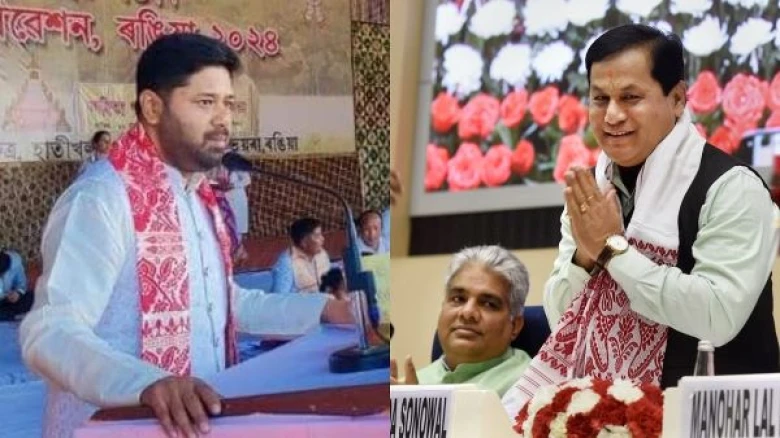Sports

In this comparative analysis, we delve into the nuances of their profiles, shedding light on the disparities...
Digital Desk: Rivals Lurinjyoti Gogoi and Sarbananda Sonowal filed their nomination for the upcoming Lok Sabha elections in 2024, on Tuesday. However, beyond the traditional political diction, a new angle emerges as scrutiny deepens into the financial and educational profiles of the contenders.
The income tax details submitted by Sarbananda Sonowal for the last five years show that his income declined from 20,33,560 in FY 2018-19 to 15,72,580 in 2023-24. On the contrary, Lurinjyoti’s income doubled in the last five years from 34,99,00 in 2018 to 69,35,00 in 2023. Despite the visible difference in the candidates' income, Sarbananda has a much higher income than Lurinjyoti.
According to the affidavit, Sarbananda Sonowal has 6 bank accounts with more than 47 lakh deposited in those accounts. Lurinjyoti has 4 bank accounts with a sum of over 6 lakh deposits.
Sarbananda possesses over 1,64,65,258.85 rupees of movable assets in his name. Immovable assets worth 3,11,20,000 Indian rupees and liabilities worth 25,78,370 rupees. Lurinjyoti possesses movable assets worth 25,11,472 Indian rupees and immovable assets worth 9,20,000
Lurijyoti’s cash in hand is 9,49,128 Indian rupees and Sarbananda’s 27,679 Indian rupees.
The income tax declarations spanning the past five years reveal a striking contradiction.
Education
Lurinjyoti Gogoi: He completed his Master of Science (Mathematics) from Dibrugarh University in 2004.
Sarbananda Sonowal: He completed his Bachelor of Law from Gauhati University (G.U Law College) in 1996 and his Bachelor of Communication and Journalism in the same year from Guwahati University.
The contrasting profiles of Lurinjyoti Gogoi and Sarbananda Sonowal offer voters a multifaceted spectrum of choices in the upcoming Lok Sabha elections. While Sonowal presents a narrative of financial stability, backed by a diverse educational background, Gogoi's trajectory showcases a remarkable surge in personal income alongside a specialized academic focus.
The disparities in their financial portfolios, cash holdings, and educational trajectories highlight the complexity of the decision-facing voters. Finally, the choice between these two contenders transcends conventional political affiliations, prompting a nuanced evaluation that goes into their respective financial acumen, educational pedigrees, and vision for the future.
Leave A Comment